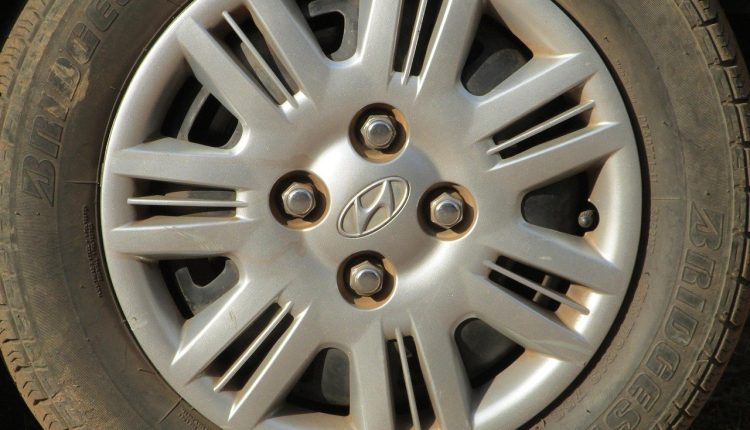How to Check Your Tyre Tread Depth & Why It Matters, Explained By UK Car Experts
Key Takeaways
- UK legal tyre tread depth limit is 1.6mm, but safety experts recommend replacing tyres at 3mm for optimal performance and stopping distances.
- Three reliable methods exist for checking tread depth: the 20p coin test, built-in wear indicators, and digital gauges for precise measurement.
- Driving with worn tyres can result in £2,500 fines and 3 penalty points per tyre, plus significantly increased stopping distances in wet conditions.
- 190 people were killed or seriously injured in 2023 alone due to collisions related to defective tyres – a 29% increase from 2022.
- Regular tyre checks prevent MOT failures and motorway breakdowns, with 30% of cars receiving tyre warnings during their annual test.
Worn Tyres Contribute to Convictions and Casualties
The statistics paint a startling picture of tyre safety in the UK. Recent data shows dangerous tyres lead to approximately 5,594 convictions annually, along with 900 casualties and 160 deaths. In 2023 alone, 190 people were killed or seriously injured in collisions related to defective tyres – that’s a stark 29% increase from 2022. These aren’t just numbers on a spreadsheet; they’re real families.
What makes these statistics particularly troubling is just how preventable these incidents were. One in five vehicle breakdowns on motorways stems from tyre defects, yet millions of UK motorists admit they don’t regularly check their tyre condition or even know how to do so properly. It’s no wonder there are so many road traffic incidents across the country.
The reality is that many drivers simply don’t realise how quickly tyre performance deteriorates as tread depth decreases. This knowledge gap has serious implications, not just for individual safety, but for every road user sharing the same highways and city streets.
UK Legal Limit: 1.6mm (But You Should Replace at 3mm)
Legal Requirements Across Central Three-Quarters of Tyre
The UK legal minimum tyre tread depth stands at 1.6mm across the central three-quarters of the tyre’s breadth and around its entire circumference. This measurement zone is vital because it represents the primary contact area between your vehicle and the road surface. However, understanding the legal minimum is just the starting point for responsible tyre maintenance.
The central three-quarters rule exists because this section of the tyre experiences the most wear during normal driving conditions. Edge wear patterns or isolated worn spots don’t necessarily indicate overall tyre condition, which is why the measurement focuses on this critical central area where maximum grip and water dispersion occur.
Why Safety Experts Recommend 3mm – Not 1.6mm
Tyre and safety experts consistently recommend replacing tyres when tread depth reaches 3mm, well before hitting the legal limit. The reason behind this recommendation? It comes down to stopping distance data. At 50 mph in wet conditions, a vehicle with 1.6mm tread depth requires an additional two car lengths to stop compared to tyres with 3mm of tread.
At 70 mph, the difference is even more dramatic, with tyres at the legal minimum requiring approximately 89 feet more stopping distance than tyres with 4mm of tread depth. Digital tyre tread depth gauges provide the precision needed to monitor these critical measurements accurately, so drivers can make informed decisions about tyre replacement before safety becomes compromised.
The performance deterioration isn’t gradual – it accelerates significantly as tread depth decreases below 3mm. Water dispersion gets less effective, grip on wet surfaces diminishes noticeably, and the risk of aquaplaning increases substantially.
Penalties Can Reach £2,500 and 3 Points Per Tyre
The legal consequences of driving with tyres below the minimum tread depth are severe. Each defective tyre can result in a fine of up to £2,500 and three penalty points on your driving licence. With four tyres on a vehicle, the maximum penalty reaches £10,000 and 12 penalty points – that’s enough to result in an automatic driving ban for most licence holders.
These penalties reflect the seriousness with which UK authorities view tyre safety. Beyond the immediate financial and legal consequences, having penalty points for tyre offences can significantly increase insurance premiums and affect employment prospects for professional drivers.
How to Check Tread Depth: 3 Reliable Methods
1. The 20p Coin Test (When Outer Rim Shows, Tyre Needs Checking)
The 20p coin test provides a quick, accessible method for checking tyre tread depth without any special equipment. Insert a 20p coin into the main grooves of your tyre tread. If the outer band of the coin remains visible when fully inserted, your tyres may require professional inspection or replacement.
This test works because the outer band of a 20p coin sits at just the right height to indicate when tread depth approaches concerning levels. However, check multiple points across each tyre, as wear patterns can vary significantly across the tyre surface due to alignment issues, driving habits, or suspension problems.
While the 20p test serves as a useful quick check, it’s not precise enough for definitive legal compliance. Think of it as an early warning system that indicates when more thorough measurement is needed.
2. Tyre Wear Indicators (Built-in Bars)
Modern tyres come equipped with tyre wear indicators (TWI) – small raised bars positioned at 1.6mm depth within the tyre grooves. When the tread surface becomes level with these indicator bars, the tyre has reached the legal minimum and requires immediate replacement.
These indicators appear as small bars running perpendicular to the tread direction and are positioned at regular intervals around the tyre circumference. They’re designed to be easily visible during routine inspections, providing a clear visual reference for legal compliance.
The limitation of tyre wear indicators is that they only show when you’ve reached the legal minimum – by this point, your tyres have already lost significant performance capability and should have been replaced earlier for optimal safety.
3. Digital Tread Depth Gauge (Most Accurate)
Digital tread depth gauges are the most accurate method for measuring tyre tread depth, providing precise readings that enable informed decision-making about tyre replacement timing. These devices eliminate guesswork and provide consistent, reliable measurements across different tyres and conditions.
Professional-grade digital gauges can measure to decimal precision, allowing drivers to track tread wear progression over time and plan replacement schedules proactively rather than reactively. This precision is particularly useful when monitoring tyres approaching the 3mm safety threshold recommended by experts.
The investment in a quality digital gauge pays dividends through improved safety, better timing of tyre purchases, and the ability to demonstrate due diligence in maintaining vehicle safety standards.
Tyre Condition and MOT Results
30% of Cars Receive Tyre Warnings During MOT
Annual MOT statistics reveal a concerning pattern regarding tyre maintenance in the UK. Approximately 30% of vehicles receive tyre-related warnings or failures during their MOT test, indicating widespread neglect of this critical safety component. This statistic suggests that nearly one in three drivers is operating their vehicle with tyres that don’t meet optimal safety standards.
The MOT test represents a quick snapshot of vehicle condition at a specific point in time, yet the high percentage of tyre-related issues suggests many drivers only address tyre problems when legally obligated to do so. Such a reactive approach to tyre maintenance puts drivers and other road users at unnecessary risk throughout the year between tests.
MOT testers are trained to identify not just illegal tyre conditions but also tyres approaching unsafe levels. The warnings issued during these tests provide valuable opportunities for drivers to address tyre issues before they become dangerous or illegal.
Check Your Tyres Now Before It’s Too Late
The evidence overwhelmingly supports the importance of regular tyre maintenance and proactive replacement strategies. With 190 people killed or seriously injured in tyre-related incidents in 2023 – a 29% increase from 2022 – the time for complacency has passed. Every driver has both a legal and moral obligation to ensure their tyres meet safety standards.
Regular tyre checks should be just as routine as checking fuel levels or oil condition. The small investment of time required for weekly tyre inspections pales in comparison to the potential consequences of tyre failure. Modern technology makes these checks easier and more accurate than ever before, removing any excuse for neglecting this critical safety measure.
The choice is clear: proactive tyre maintenance protects lives, prevents legal consequences, and saves money in the long term. Don’t wait for your annual MOT or a roadside breakdown to discover that your tyres need attention. The statistics show that this isn’t a problem that applies to other people – it’s a risk that every driver faces and must actively manage.
Take control of your tyre safety today by implementing regular checking routines and replacing tyres before they reach critical wear levels. Your family, fellow road users, and your future self will thank you for making this commitment to responsible driving.
For precise tyre monitoring and professional-grade measurement tools, AutoPump provides digital solutions that help UK drivers maintain optimal tyre safety and legal compliance.

